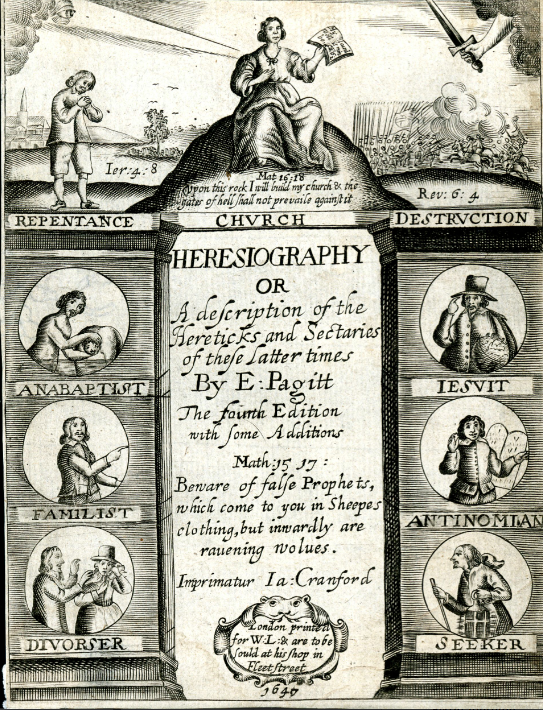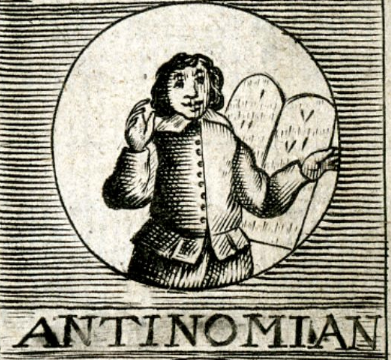or a Description of the Heretickes and Sectaries Sprang up in these latter times by Ephraim Pagett 1645. Laying the grammar aside, this book is an exhaustive list of sects that had arisen by 1647 and all the reasons why Mr Pagett didn’t like them. Ephraim was a royalist leaning cleric and his book was a precursor to the more famous Gangraena which was published the following year, though sadly for us without pictures. The engraving on the front page shows representatives of some of the sects in small vignettes down either side. Images © The Trustees of the British Museum
This fellow in coat, breeches and shoes represents repentance, as you can tell as he has no headgear.
This guy is a “familist” who were a sect that followed a Dutch mystic called Hendrik Niclaes who were eventually absorbed into the Quaker movement. Short tabbed doublets seemingly were worn too.
A divorser. Not actually a sect, but according to Pagett: “That will put away their wives for small offence not regarding the word of our Saviour Mat. 19.9. That whosoever shall put away his wife, except it be for whoredome, committeth adultery, and whosoever marrieth her that is divorced committeth adultery.” The divorcer in a coat and his wife wears a petticoat and bodies with a tall hat.
An antinomian. Whilst also not a sect as such, an antinomian believed that faith alone was necessary for salvation. This guy looks pretty self-righteous in front of the ten commandments, which presumably he is flouting and relying on his true faith. Short tabbed doublet and breeches.
A seeker. They believed that all organised religion was corrupt and preferred to wait for God’s revelation to come to earth and it has been argued that they were the precursors of the Quaker faith. Not at all sure what he is wearing. A hoodie perhaps? It’s certainly some kind of garment that pulls over the head rather than buttoning up.
Destruction graphically represented. This kind of scene was playing out all across the country.







Leave a comment